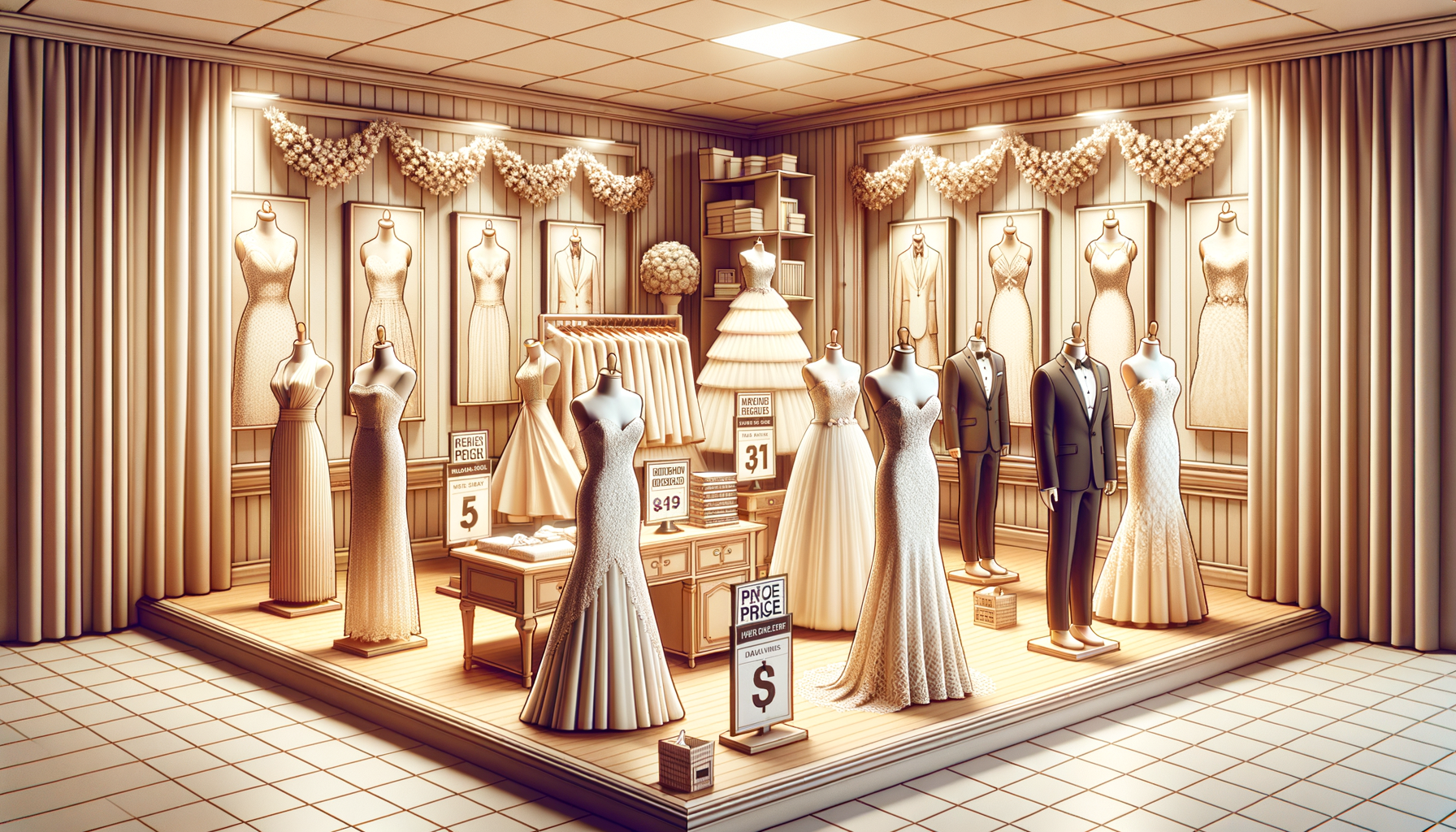
Choosing Wedding Dresses & Outfits Without Overspending
Understanding Wedding Dress Styles
Wedding dresses come in a variety of styles, each offering a unique silhouette and aesthetic appeal. Understanding these styles can help brides make informed choices that align with their personal taste and the theme of their wedding. The most common styles include A-line, ball gown, mermaid, and sheath.
The A-line dress is a popular choice due to its flattering nature, which suits most body types. It features a fitted bodice that gradually flares out to the ground, resembling the letter ‘A’. This style is versatile and can be dressed up or down depending on the fabric and embellishments used.
Ball gowns are synonymous with fairy-tale weddings. They feature a fitted bodice and a full, voluminous skirt, often supported by layers of tulle or crinoline. This style is ideal for formal weddings and adds a touch of drama and elegance.
Mermaid dresses are tailored to hug the body from the chest to the knee, then flare out dramatically. This style accentuates curves and is perfect for brides who want to make a bold statement. However, it is less forgiving and may not be comfortable for all-day wear.
Sheath dresses offer a sleek and modern look, following the body’s natural line without flaring out. They are ideal for minimalist brides or those having a beach or garden wedding. This style is lightweight and easy to move in, making it a practical choice for many.
When choosing a dress style, consider the venue, wedding theme, and personal comfort. Trying on different styles can also provide valuable insights into what feels and looks right.
Smart Shopping Tips for Bridal Gowns
Finding the perfect bridal gown doesn’t have to mean overspending. With some smart shopping strategies, brides can find stunning options that fit within their budgets. Here are a few tips to consider:
- Set a Realistic Budget: Before starting the search, determine a budget that considers not just the dress but also accessories, alterations, and potential shipping costs.
- Shop During Sales: Bridal boutiques often have sales during off-peak seasons. Attending trunk shows or sample sales can also offer significant discounts on designer gowns.
- Consider Pre-Loved Dresses: Many brides choose to sell their gowns after the wedding. Online platforms and consignment shops offer gently used dresses at a fraction of the original price.
- Be Open to Customization: Sometimes, a less expensive dress can be transformed with the right alterations or added embellishments. Consider working with a skilled tailor to achieve the desired look.
- Limit the Entourage: Bringing too many people to dress fittings can lead to conflicting opinions and pressure to overspend. Limit the entourage to a few trusted friends or family members.
By staying focused and patient, brides can find beautiful gowns that don’t break the bank, allowing them to allocate more of their budget to other important aspects of their wedding day.
Bridesmaid Dresses: Coordinating Without Clashing
Choosing bridesmaid dresses can be a delicate balancing act. The goal is to find styles that complement the bride’s gown and the wedding theme while also flattering each bridesmaid. Here are some strategies to achieve this:
Consider Color Palettes: Start by selecting a color palette that aligns with the wedding theme. Soft pastels, rich jewel tones, or classic neutrals can set the tone for the overall aesthetic. Once a color is chosen, consider allowing bridesmaids to select different shades within the same family for a harmonious yet varied look.
Mix and Match Styles: To accommodate different body types and personal styles, consider allowing bridesmaids to choose different dress styles within the same color or fabric. This approach ensures everyone feels comfortable and confident while maintaining a cohesive look.
Focus on Fabric: The choice of fabric can significantly impact the overall look and feel of bridesmaid dresses. Lightweight fabrics like chiffon or silk are ideal for summer weddings, while velvet or satin might suit a winter affair. Consistency in fabric helps tie together different styles or colors.
Accessorize Thoughtfully: Accessories can unify the bridesmaid ensemble. Consider providing matching jewelry, shoes, or hairpieces to create a consistent look. Alternatively, giving bridesmaids the freedom to choose their accessories can add a personal touch.
By considering these factors, brides can coordinate bridesmaid dresses that enhance the wedding’s visual appeal and ensure everyone feels part of the celebration.
Mother of the Bride and Groom: Elegant Choices
The mothers of the bride and groom also play a significant role in the wedding, and their attire should reflect their importance. Finding the right outfit involves balancing elegance with comfort and ensuring it complements the wedding’s overall style.
Coordinate with the Wedding Party: While mothers should not match the bridesmaids, their outfits should harmonize with the wedding color palette. Soft, neutral tones or pastel shades often work well, providing a subtle yet sophisticated look.
Consider the Venue and Season: The choice of outfit should also consider the venue and season. For instance, lighter fabrics and shorter sleeves are appropriate for summer weddings, while heavier materials and long sleeves suit winter occasions.
Embrace Personal Style: Mothers should feel comfortable and true to their style. Whether they prefer a classic dress, a chic pantsuit, or a stylish skirt and blouse ensemble, the key is to choose something that makes them feel confident and beautiful.
Accessorize with Care: Accessories can enhance an outfit, but they should not overpower it. Simple jewelry, a stylish hat or fascinator, and a matching clutch can add the perfect finishing touches.
By focusing on these elements, mothers can select outfits that are elegant, appropriate, and reflective of their unique style, ensuring they feel celebrated and part of the special day.
Guest Attire: Decoding Dress Codes
Wedding invitations often include dress codes, which can sometimes be confusing. Understanding these codes can help guests choose appropriate attire that aligns with the couple’s vision for their special day.
Black Tie: This is the most formal dress code, typically reserved for evening weddings. Men should wear tuxedos, while women should opt for floor-length gowns or elegant cocktail dresses.
Formal or Black Tie Optional: Similar to black tie, but with a bit more flexibility. Men can wear dark suits instead of tuxedos, and women can choose between long gowns or sophisticated cocktail dresses.
Semi-Formal or Cocktail: This dress code allows for a bit more creativity. Men should wear suits, while women can choose cocktail dresses or dressy separates. The time of day and venue can influence the level of formality.
Casual: Often used for beach or outdoor weddings, this dress code is relaxed. Men might wear dress pants with a button-down shirt, while women can opt for sundresses or skirts with blouses.
When in doubt, it’s always better to err on the side of overdressing rather than underdressing. If the invitation doesn’t specify a dress code, consider reaching out to the couple or wedding party for guidance. By decoding dress codes, guests can ensure they dress appropriately and feel comfortable celebrating the happy couple.


